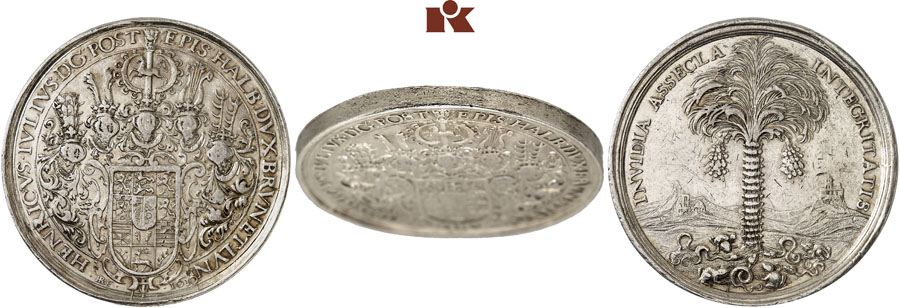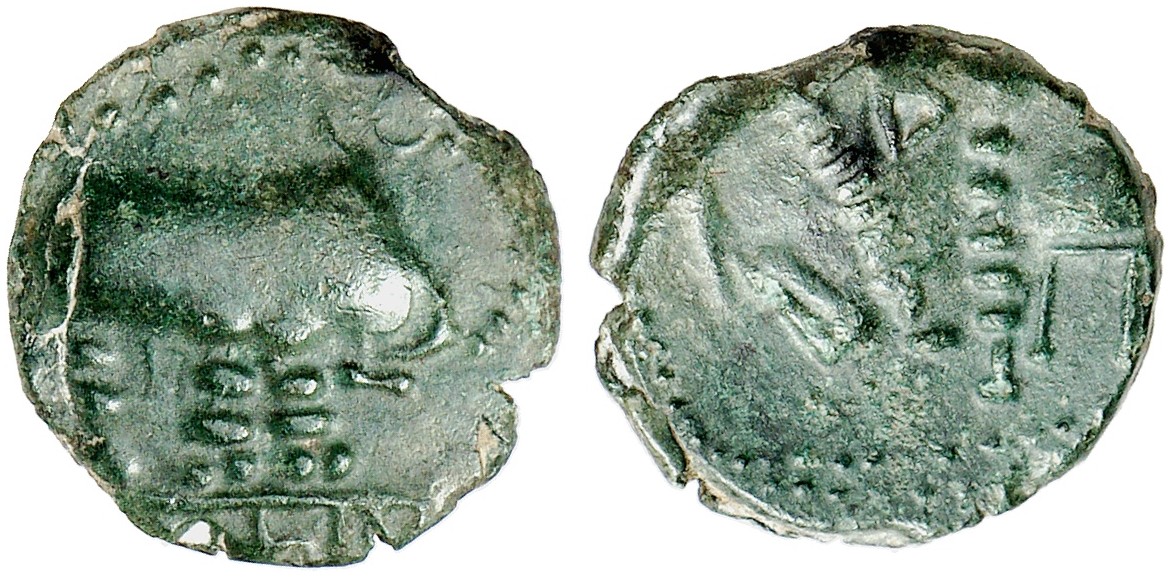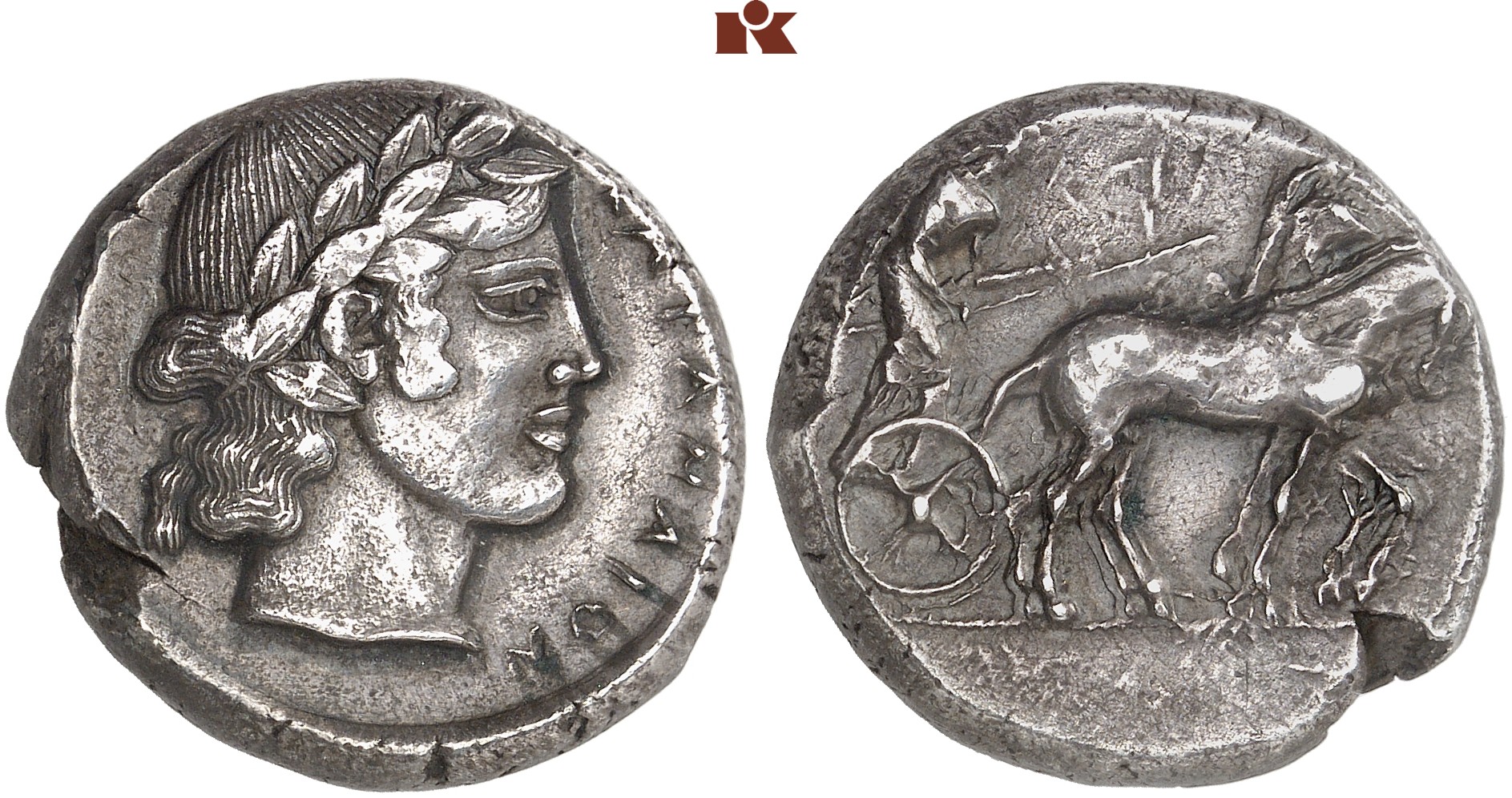Six Days of Thrilling Numismatic Excitement in Osnabrück - Preview of our Fall Auction Sales 410-414
16. August 2024
Our Fall Auction Sales will take place from Monday 23 to Saturday 28 September 2024. Every single day is bursting with numismatic highlights, as several special collectors have entrusted Künker with the sale of their treasures, allowing their pieces to re-enter the numismatic cycle. Customers will therefore encounter several world-class collections:
- Auction 410 Minted History of the Thirty Years’ War and the Peace of Westphalia
- Auction 411 A Monetary History of Württemberg – The Heinz-Falk Gaiser Collection, Part 1
- Auction 412 Gold and Silver Coins from Medieval and Modern Times with the Regina Adams Collection of selected lösers, a special collection focusing on Ivan III and an important collection of U.S. gold coins
- Auction 413 German Empire with an important collection from a Mecklenburg private collector as well as imperial gold coins from the collection of an industrial entrepreneur from western Germany
- Auction 414 The Lodewijk S. Beuth Collection of Dutch Coins
Künker’s total estimate for the approximately 3900 lots amounts to 10 million euros. And while we will naturally be highlighting spectacular individual pieces in this preview, no collector should miss out on the opportunity to browse the catalogs carefully. As there are many collections on offer, there are numerous lots with estimates in the two- and low three-digit range.
Auction Sales are always a social event. So take the time to participate in the sale on site, and enjoy a nice chat with like-minded people during the breaks! Our customer service would be delighted to help you find an accommodation in Osnabrück.
Minted History of the Thirty Years’ War and the Peace of Westphalia – The Collection of a German Manufacturer and History Enthusiast
There is really only one word to describe this collection – breathtaking. Leafing through the almost 400 pages of the catalog, admiring the countless multiple gold coins and multiple talers from the period of the Thirty Years’ War simply takes your breath away. The German manufacturer and history enthusiast who put together this collection over decades did not limit himself to the German players in this war. His focus is on Europe as a whole, which is why his collection paints a dramatic picture of intra-European entanglements.
As a result, all the major and minor protagonists of the Thirty Years’ War can be found on the coins: the Emperor as well as the Swedish, Danish, English and French kings; the Spanish Habsburgs as well as Italian princes. And in terms of beauty, the coins and medals of the United Provinces of the Netherlands compete with those of the German territories. Anyone looking at the material will be in awe of the numismatic splendor created at the transition from the late Renaissance to the early Baroque period.
Our Specialists have taken great care to present this unique collection in its historical context. For this reason, numerous comments on the history of the Thirty Years’ War and its historical figures can be found throughout the catalog.
A Monetary History of Württemberg – The Heinz-Falk Gaiser Collection, Part 1
Are you interested in Württemberg and its coins? In this case, you will be amazed by the Heinz-Falk Gaiser Collection. The avid collector focused on this field for decades. With much patience, expertise and enthusiasm, he succeeded in putting together a world-class collection of Württemberg issues. The first part including 153 lots will be crossing the auction block on 23 September 2024.
It contains Württemberg coins from the beginnings of the 14th century up to 1693, when Eberhard Ludwig was prematurely proclaimed of age. The coins therefore portray the old state of Württemberg, which got caught up in the conflict over Protestantism and partly came under imperial rule.
Like any truly committed specialist collector, Heinz-Falk Gaiser not only looked for rare and precious denominations, but placed equal importance on adding fractional coins to his ensemble. As a result, he was able to acquire many extremely rare denominations of the highest quality available on the market. Although many of them have estimates in the double and low triple digits, his coins are of a quality that both collectors and curators dream of.
It was only on rare occasions that Heinz-Falk Gaiser allowed himself to “get carried away”, as he put it. But since he collected coins for decades, these “rare occasions” were frequent enough to secure some of the great rarities of Württemberg numismatics. Those who are not collectors of Württemberg coinage, but are rather interested in artistic Renaissance pieces will therefore find some numismatic icons of the finest quality. After all, Heinz-Falk Gaiser paid special attention to the quality of his pieces. Therefore, even the ‘only’ very fine issues are often the best specimen of the respective type that exist on the market.
Auction 412: Gold and Silver Coins with Numerous Special Collections
24 and 25 September 2024 are designated for our general auction sale. But what does “general” even mean? The special collections offered on these days were simply not large enough to be presented in a separate catalog. But of course, they are just as important as the other collections.
The Regina Adams Collection
The Regina Adams Collection, for example, “only” contains 31 selected lösers of the Welf dynasty – however, it is incredibly difficult to find 31 lösers of such extraordinary quality. It was of utmost importance to the collector to be able to see every single detail of the motif.
An extensive brochure was published for this collection, dealing with the phenomenon of the löser. You can download the file at: https://www.kuenker.de/data/mitteilungen/Kuenker_Broschuere_Jakobsloeser_Final_LowRes.pdf.
Ivan III (IV)
A tragic chapter in Russian history is at the heart of this collection: Newborn Ivan was installed on the Russian throne at just 2 months old, only to be overthrown one year later. But what do you do with an innocent child that had been tsar for a short time? Elizabeth Petrovna, the daughter of Peter the Great, became Empress of Russia in 1741. She kept Ivan in captivity throughout her entire reign. Catherine the Great, who liked to present herself as an enlightened monarch, considered this to be dangerous – so she had Ivan killed in 1764.
Only a few coins were minted during Ivan’s rule from 28 October 1740 until 6 December 1741. We are able to offer 16 of them – an incredibly large number given Ivan’s short reign.
By the way, if you are interested in Russian numismatics but cannot afford the coins of Ivan III (IV), there is another special collection on offer : 54 lots from the time of Paul I, including numerous copper coins of spectacular quality. Estimates start as low as 10 euros.
U.S. Gold Coins
And there is a third special collection to be offered in catalog 412. Almost 200 lots with U.S. gold coins – mainly Double Eagles – will be crossing the auction block. Of course, the offer features many great rarities. All pieces were graded.
A Great Selection of Rarities
It goes without saying that auction 412 also contains rare coins from many other parts of the world. At this point, we present you two examples: a modern Chinese coin set of which only 50 specimens exist, and a 1581 broad taler of Cologne of 2 1/2 talers, the only known specimen in private hands.
Catalog 413: German Coins After 1871
More than 1,000 German rarities minted after 1871 are offered in auction 413. They include a collection from a Mecklenburg private collector as well as imperial gold coins from the collection of an industrial entrepreneur from western Germany. Look forward to the great rarities of the German Empire such as 3 marks Frederick the Wise, 20 marks Heinrich XXII of Reuss, elder line, 20 marks Ernest II of Saxe-Coburg and Gotha as well as 20 New Guinean marks.
Catalog 414: Dutch Coins from the Lodewijk S. Beuth Collection, Part 2
On 27 and 28 September 2023, we realized incredible results with the sale of the first part of the Lodewijk S. Beuth Collection. At the time, the about 1,200 lots were sold in collaboration with Laurens Schulman B. V. and fetched a total result of 5.2 million euros. Ten lots were sold for six-figure results.
Now – once again in collaboration with Laurens Schulman B. V. – the second part of the collection will be on offer. It contains coins from the beginnings of the Netherlands under the Merovingians up to 1795.
Following the traditional order of Dutch numismatics, the elaborately designed catalog presents Dutch coins arranged according to the seven northern provinces.
Do I need to say more? Connoisseurs know exactly what the Lodewijk S. Beuth Collection stands for: extraordinarily rare coins of unusual quality that have not been seen on the market for decades. Collectors of Dutch coins who do not carefully study this catalog have only themselves to blame.


































